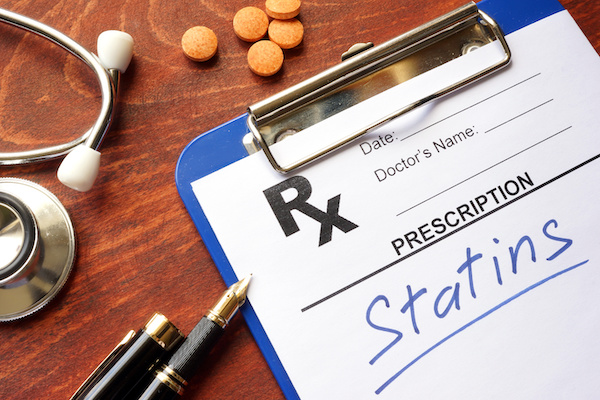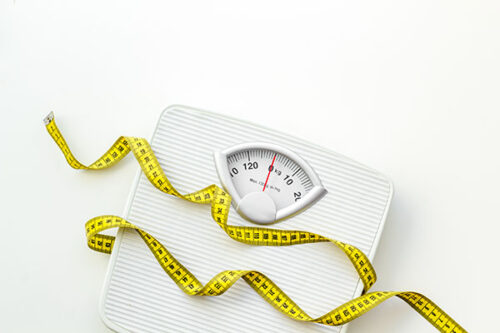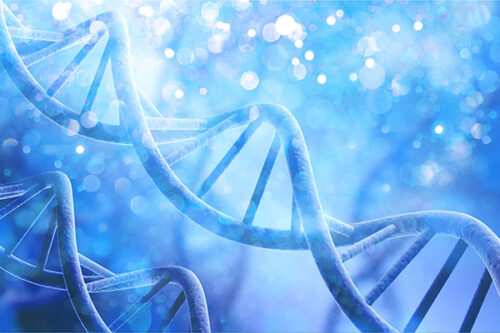Who Needs to Take Statins? [What You Need to Know]

Medications designed to lower cholesterol levels, also called statins, are considered so beneficial some enthusiastic doctors declare they should be put into the drinking water. But while pharmaceutical companies and their sales staff (most medical doctors) would like you to believe that simply lowering your cholesterol number can solve health problems, there is much more to overall health and wellbeing.
Keep reading to learn the truth about who needs to take statins.
What Are Statins?
Statin medications inhibit the activity of an enzyme involved in the production of cholesterol in the liver, known as 3-hydroxy-3-methylglutaryl-coenyzme A reductase. Statins are also known as HMG-CoA reductase inhibitors. Blocking this enzyme results in the production of less cholesterol in the liver, resulting in a decline in blood cholesterol levels.
Although statins reduce the cholesterol measured in the blood, it’s not always clear when to take statins and how they benefit individual patients. Will the patient live a longer and healthier life, or will they have a fatal heart attack the same day, but with a lower blood cholesterol level? Does the medication actually make a difference?
Deciding to take statins shouldn’t be taken lightly, as doing so may become a lifelong commitment. For a younger patient, beginning to use statins could require more than five decades of drug therapy with an increased risk of side effects.
Important Notes about Statins
First and foremost: Pregnant and breastfeeding women should never take statins. Additionally, those who have liver disease or experience allergic reactions to the drugs should avoid them.
Even patients who aren’t allergic to statins may experience side effects, such as:
- Abdominal pain
- Abnormal heartbeat
- Accidental injury
- Arthritis
- Back pain
- Bronchitis
- Chest pain
- Constipation
- Diarrhea
- Dizziness
- Flu symptoms
- Fluid retention
- Gas
- Headache
- Indigestion
- Infection
- Inflammation of sinus and nasal passages
- Insomnia
- Joint pain
- Muscle aching or weakness
- Nausea
- Rash
- Stomach pain
- Urinary tract infection
- Weakness
Commonly Prescribed Statins:
You may receive a prescription for statins without realizing it. Here are the names of the most commonly prescribed statin medications:
- Advicor: A combination of extended-release niacin and lovastatin (Mevacor)
- Altocor: An extended-release form of the cholesterol-lowering drug lovastatin, which releases small amounts of the drug throughout the day
- Altoprev: An extended-release form of the cholesterol-lowering drug lovastatin, which releases small amounts of the drug throughout the day
- Caduet: Atorvastatin with amlodipine (a blood pressure medication)
- Crestor (rosuvastatin): Some cardiologists call Crestor “the Gorilla” statin
- Lescol XL, Lescol (fluvastatin)
- Lipitor (atorvastatin)
- Pravachol (pravastatin)
- Vytorin: A combination of simvastatin + ezetimibe
- Zocor (simvastatin)
No One Dies of High Cholesterol
During my over forty years of medical practice, I have never seen anyone die of high cholesterol (and neither has any other doctor). However, high cholesterol is certainly a risk factor for many other fatal diseases.
Cholesterol can be a sign that reflects:
- The richness of the person’s diet
- A person’s ability to metabolize rich foods
- The overall health of a person’s body
Cholesterol molecules in the bloodstream are essentially non-toxic. If they were the problem, their predictive value for strokes and heart attacks would be near 100%. High cholesterol levels would indicate sick arteries and result in more serious health problems in all patients.
However, a great statin debate is occurring among experts. To add my experience to the debate, I know many people with cholesterol levels over 300 mg/dL, with perfectly clean arteries—and just the opposite, people with levels below 170 mg/dL who have suffered major heart attacks.
The Truth About What High Cholesterol Means
While there is a significant correlation between the richness of a person’s diet (saturated fat content of the food choices) and the level of cholesterol found in that person’s blood, this factor doesn’t necessarily mean the individual will suffer adverse effects. A richer diet generally results in a higher blood cholesterol level, which increases the risks of disease. Examples include heart attacks, diabetes, strokes, and a variety of cancers.
The real culprit is the rich diet—the elevated cholesterol is a secondary finding. But the often dishonest promotion of high-profit statin drugs has led many patients to believe their health problems are cured simply because their cholesterol levels are lower. As a result, they may see no more need to make beneficial diet and lifestyle changes, which make a far greater difference than any medications.
For example, one analysis found smoking cessation and using plain aspirin much more cost-effective than prescription statins. But a patient who believes they are cured may not attempt to quit smoking or use aspirin simply because they are taking statins.
Increasing the Market by Disease Mongering
In the 1970s, high cholesterol was any level above 300 mg/dL. Pharmaceutical companies were first starting out offering cholesterol-binding agents, vitamins, and niacin to address high levels. These drugs didn’t provide significant profits and came with concerning side effects, such as constipation (binding agents) and flushing (niacin).
The definition of high cholesterol meant the market was small for medications that would lower those levels. As high-profit statins were discovered and became more popular, the medical industry adjusted its definition, putting anyone with a cholesterol level of 200 mg/dL into the “abnormal” or “high” category.
Now, over half the people following the Western diet are potential customers for statins by this definition. This is considered disease mongering—the expansion of medical definitions for the sake of profits. Even worse, some experts have suggested that the ideal cholesterol level would be below 150 mg/dL. That means almost everybody needs to be on statins—we might as well put these drugs in the drinking water.
Why Take Statins?
So, who needs to take statins? Patients with the greatest risk of a future tragedy should receive the most intensive treatment with diet and/or medications. They will experience the greatest benefits, with the reduction of heart attacks and strokes, at the most reasonable costs.
The risk of future tragedies is predicted by observing signs, called risk factors. These include high blood pressure, cholesterol, triglycerides, uric acid, blood sugar and weight. Information on family history, alcohol use, exercise and smoking is also important. An even more reliable predictor of future problems is a person’s history of having problems with their arteries.
When should I take statins? Those with a history of a heart attack, stroke, bypass surgery, and/or angioplasty are at the highest risk and most likely to benefit from statin therapy.
Why Some People Want to Avoid Taking Statins
There are a few reasons why people don’t need or should avoid statin medications.
Lack of Need in Most Premenopausal Women
The general agreement among doctors is that people at low risk should not be taking statins. Women, especially before menopause, have a much lower risk of developing heart disease than men of a similar age.
Treating a disease someone already has is called secondary prevention. Malcolm Kendrick, a general practitioner looking at large trials of statins for secondary prevention involving women with heart disease, concluded that “To date, none…has shown a reduction in overall mortality in women” using statins.”
Among women who have never had heart disease (primary prevention), trials have not shown either an overall reduction in death (a mortality benefit) or a reduction in heart attacks or surgery. Dr. Kendrick also noted that one meta-analysis“suggested that overall mortality may actually be increased by 1% over 10 years (in both men and women).”
Damage to Muscles
Most medical doctors think statins have few side effects and that these are mild and reversible. Complaints among patients on statins are often dismissed by their doctors as unrelated to the medication, and the issue of side effects has not been well studied. Therefore, the true incidence is unknown.
The most serious adverse effect of taking these medications is damage to the muscles, called rhabdomyolysis, which can occasionally result in death. An estimated 9.4% of people on these medications experience muscle inflammation and pain (myositis). The more potent the statins, the greater the risk of muscle damage.
One study used electron microscopy and biochemical approaches to examine the muscle tissues of patients on statins. Researchers found muscle cell damage in over 70% of people on statins, even when they had no complaints of pain.
A potential reason behind this muscle pain is due to statins causing spontaneous, irregular leaks of calcium from the muscles—which leads to muscle damage and weakness.
Relative Potency of Statins and Risk of Muscle Damage1
| Statin | Potency* | Fatal Rhabdomyolysis** |
| Fluvastatin (Lescol) | 1 | 0 |
| Pravastatin (Pravachol) | 2 | .04 |
| Lovastatin (Mevacor) | 3 | .19 |
| Simvastatin (Zocor) | 6 | .12 |
| Atorvastatin (Lipitor) | 12 | .04 |
| Cerivastatin (Crestor) | 200 | 3.16 |
*Relative potency of 60 mg daily, with Fluvastatin equal to 1
** Cases per million prescriptions
Increased Risk of Liver Problems and Diabetes
Some concerns exist that people taking statins are at an increased risk of developing diabetes or experiencing liver problems. Statins can increase blood sugar levels. If you were already at risk of developing type 2 diabetes, taking a statin could push you over the edge.
Statins increase the production of enzymes that signal liver inflammation. While liver problems are rare, those taking statins should immediately consult a doctor upon noticing changes in the urine or unusual fatigue.
Alternative Medications to Statins
There are also alternative cholesterol-lowering medications, such as extended-release niacin and cholesterol-binding agents (Colestid, Questran, and Welchol), which have been used since I started to practice and have benefits equal to statins.
There are also newer medications recently introduced, like Zetia and Tricor. No doubt they lower cholesterol, but life-saving and health-improving benefits have not been demonstrated. Several “natural” cholesterol-lowering medications are available and, according to published studies, can lower cholesterol. The ones I use most often are garlic, oat bran, vitamin C, and guggulipid. (I no longer use vitamin E because studies show it increases heart disease and death.)
Because of the low cost and minimal side effects, I recommend these often. However, my experience has been that few patients attain a substantial reduction in cholesterol by this approach. Therefore, when I feel the indication to lower cholesterol is clear, I resort to prescription medications.
Non-Statin Cholesterol-lowering Agents:
Here are a few non-statin medications that can help with cholesterol.
Colestid (Colestipol), Questran and Questran Light (Cholestyramine Resin) and Welchol (Colesevelam Hydrochloride)
These cholesterol-binding agents, also referred to as bile acid sequestrants, work by binding with cholesterol-based bile acids and taking them out of circulation. This prompts the liver to produce a replacement supply of bile acids, drawing the extra cholesterol it needs out of the bloodstream.
More common side effects may include constipation, indigestion, muscle aches, sore throat and weakness. Because they inhibit the absorption of other medications they should not be taken at the same time.
Niaspan (Niacin 500 mg Extended-Release Tablets)
In large doses, this B vitamin (niacin) lowers cholesterol and triglycerides. More common side effects are flushing, elevation of blood sugar and liver injury.
Tricor (Fenofibrate Capsules)
This medication works by promoting the dissolution and elimination of fat particles in the blood. The risk of rhabdomyolysis is increased when combined with statins. It must be taken with meals.
Zetia (Ezetimibe)
It acts by diminishing the absorption of dietary cholesterol through the intestines. More common side effects are abdominal pain, back pain, diarrhea, joint pain and sinusitis.
Zetia is not recommended for people with moderate to severe liver disease, or for children under 10.
I Prescribe Statins and I Hope I Guess Right
Deciding who needs to take statins and who doesn’t can be a difficult decision. As a medical doctor, I am obliged to offer every one of my patients the best care possible, based on the best evidence available. Unfortunately, most of the evidence on the efficacy of medications has been heavily tainted by pharmaceutical companies—so the truth is hard for me to know.
Based on current published research, I try to do the best for my patients, but I reserve the right to change my opinion on any drug I use.
I see many people with elevated cholesterol levels who also have a history of heart disease—heart attacks, angioplasty and bypass surgery—and some with strokes. I usually offer these high-risk patients statins. But, I always qualify my prescription by telling them that I am only guessing (and hoping) that I will be doing them more good than harm.
My guess is educated because I have been practicing (a descriptive word) for about 40 years, and I have read and understood most of the research on this subject. Thus, I would not make the offer if I did not believe it to be correct.
I also make it clear that since I am offering only my best guess, the patient must be involved in the decision. Some people are very uncomfortable about having a high cholesterol level regardless of how much I try to reassure them that I believe they are in good health and at very low risk of a problem.
Others fear the drugs and would take almost any risk to avoid them. My decision to write a prescription weighs heavily on each person’s feelings. When I believe the situation warrants aggressive treatment, one of my goals is to lower total cholesterol below 150 mg/dL. The LDL cholesterol should be below 80 mg/dL.
Different Scenarios of People with Cholesterol above 200 mg/dL
Here are examples of who needs to take statins (and who does not):
- A 60-year-old woman who is trim, exercises daily, does not smoke and has no family history of heart disease = no cholesterol-lowering medication.
- A 40-year-old man who suffered a heart attack last month = yes, a cholesterol-lowering medication.
- A 50-year-old overweight man with diabetes, no exercise and is unable to change his diet = yes, a cholesterol-lowering medication.
- A 45-year-old overweight man who has decided to make serious diet and lifestyle changes, and also hates to take drugs = no cholesterol-lowering medication.
- A 75-year-old woman who is going to follow the diet and exercise, but has a premonition that she is going to die of heart disease and insists on the medication = yes, cholesterol-lowering medication.
- A 65-year-old man with a recent history of an angioplasty, who took statins, but developed muscle pains = yes, a cholesterol-lowering medication, like niacin and Colestid, but no statins.
In these cases other decisions can be easily justified, but with little supporting evidence.
What Is My Preferred Statin?
Some statins are able to cross cell membranes easily—they are referred to as fat-soluble statins or hydrophobic and lipophilic statins. These include lovastatin, simvastatin, fluvastatin, and atorvastatin. There is concern that these fat-soluble statins may enter the cell and interfere with various substances essential for cell function, thus reducing their lifesaving benefits.4
All statins lower total cholesterol and LDL-cholesterol, and sometimes they show a small reversal of atherosclerosis. But in one review, the fat-soluble statins showed less reduction of cardiac events (heart attacks, angioplasty, bypass surgery, sudden death, and overall mortality) than did a statin that is not fat-soluble (and enters the cells less readily), called pravastatin (Pravachol). The primary goal of treatment is to reduce life-damaging events, not just lower cholesterol.
Based on this paper and the fact that pravastatin is generic (less costly), I am inclined to prescribe this variety over the others. (Most statins sell for the same price for a pill regardless of the strength; eg. 80 mg, 40 mg, 20 mg. To cut costs even further, tablets—except for time-release tablets—can be split in half.)
How Long Should Patients Take Cholesterol-Lowering Drugs?
When the medications are stopped, the cholesterol rises, usually to pretreatment levels. So once you are on these medications, you may be on them for life—unless you make serious dietary and lifestyle changes.
With a change in diet, not only does the cholesterol drop, but the artery disease heals. This is referred to as “reversal,” and can be seen in 82% of people by the first year. After the first year, the benefits continue with even more reversal and healing seen. Dean Ornish, MD, says, “According to the PET scans, 99% of the patients stopped or reversed the progression of coronary heart disease.”
The decision as to when to stop taking statins is based again on guesswork. If a patient with a history of heart artery disease has made remarkable improvements in health through diet and exercise (reflected in weight loss, vigor, blood pressure and other risk factors, improved feelings of well-being, etc.), then my guess is one to five years of cholesterol-lowering therapy may be enough.
To help with this decision, I check cholesterol levels after the medications are stopped. If the cholesterol level remains below 150 mg/dl without medication, I feel even more confident that the patient will do well (another guess).
The Diet Is Forever
A no-cholesterol, low-fat diet (The McDougall Diet) is the first step to lowering elevated cholesterol and cleaning out the arteries. You can expect a reduction in cholesterol by 20% to 45% with strict adherence.
In general, the higher the initial level, the greater the reduction after a change in diet. There are no side effects to this approach, and most people reduce their food bills by 40% or more (especially those in the habit of eating out).
Plus, this is the same diet that benefits the rest of the body by causing loss of excess weight, relieving aches and pains, regulating bowel function, lowering other common risk factors (blood pressure, blood sugar, triglycerides, etc.), reducing the risk of future diseases, and prolonging life.
Regardless of the patient’s chances of benefits and risks from medications, diet and lifestyle changes should be the first and most enthusiastic prescription made by all doctors for their patients. Only then, as a last resort, should the patient and the doctor look into medications.
References:
1) Bruce J, Rabkin E., Martin V. Rhabdomyolysis associated with current use of simvastatin and Nefazodone: Case report and current review of the literature. Advanced Studies in Medicine. 2003; 3: 168-172.
Recommended Articles

Advertising Passed Off As Research, Confuses the Public Again

How Do I Gain Weight on the McDougall Diet? I’m Not Joking!







